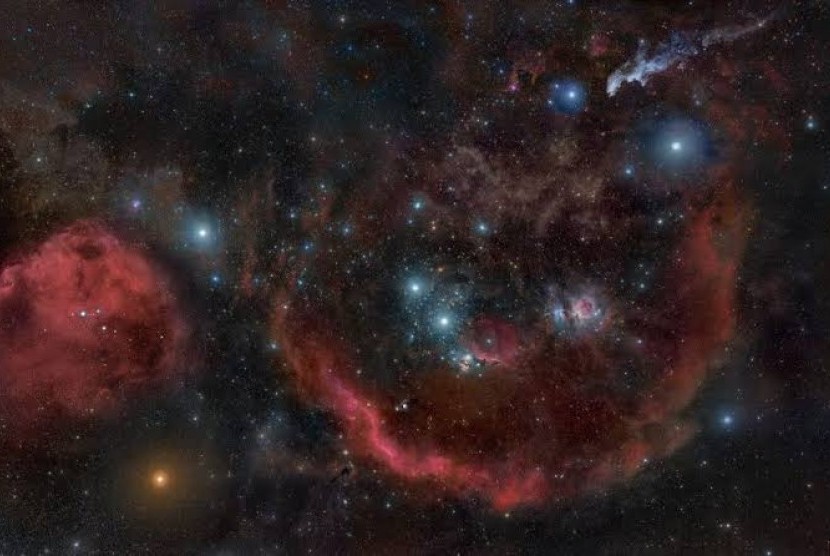Betelgeuse dimmed dramatically, ten times darker than usual.
REPUBLIKA.CO.ID, JAKARTA — A few months before the COVID-19 pandemic began in early 2020, the world’s astronomers were paying attention to Betelgeuse, a supergiant star 700 light-years away. The star dimmed dramatically, ten times darker than usual.
Several teams are working to find out what caused the “Great Dimming” the star is experiencing. One team analyzed hundreds of photos of the star and concluded that star dust is most likely blocking our view from Earth.
They discovered in June 2021 that Betelgeuse may have emitted gas, which cooled and condensed, darkening the star. Another hypothesis is that the star cools slightly, and this variability may result in a decrease in brightness.
It certainly played a role in the creation of the dust cloud. The question is, is the mystery solved? Maybe, but Great Dimming has yielded yet another surprising discovery.
A trio of astronomers describe their own astonishing discovery in a new article published in the journal Nature this week.
They were able to find Betelgeuse hiding in the background of a photo obtained by the Japanese weather satellite Himawari-8. The coincidental discovery supports several previous studies of the origins of the Great Dimming and new clues for investigating our unexplored cosmic environment.
True to its name, Himawari-8 is the eighth edition of the Japan Meteorological Agency’s Himawari satellite. This satellite orbits the earth at a distance of 22,236 miles above the equator in a geostationary orbit. The satellites take optical and infrared photos of the entire Earth once every 10 minutes from that location, mainly to help forecast weather in Asia and the Western Pacific.
A team of Japanese researchers began searching for the tiny spot of light where Betelgeuse was hidden in space behind a dazzling blue and green marble. These photos are from 2017.
The researchers came to the same conclusion as their predecessors after studying that speck of light, that Betelgeuse was reduced due to dust and natural variations in its luminosity.
For astronomers, this may be a very big thing. Building and deploying a new space telescope is neither cheap nor simple, and requires ordering rockets. However, there are currently satellites orbiting the Earth that may perform a similar function.
“Himawari is like a free space telescope!” said Simon Campbell, astronomer at Monash University in Australia.
Weather satellites like Himawari-8 are constantly imaging Earth and the space around it, generating mountains of data to sort through.
–
–


